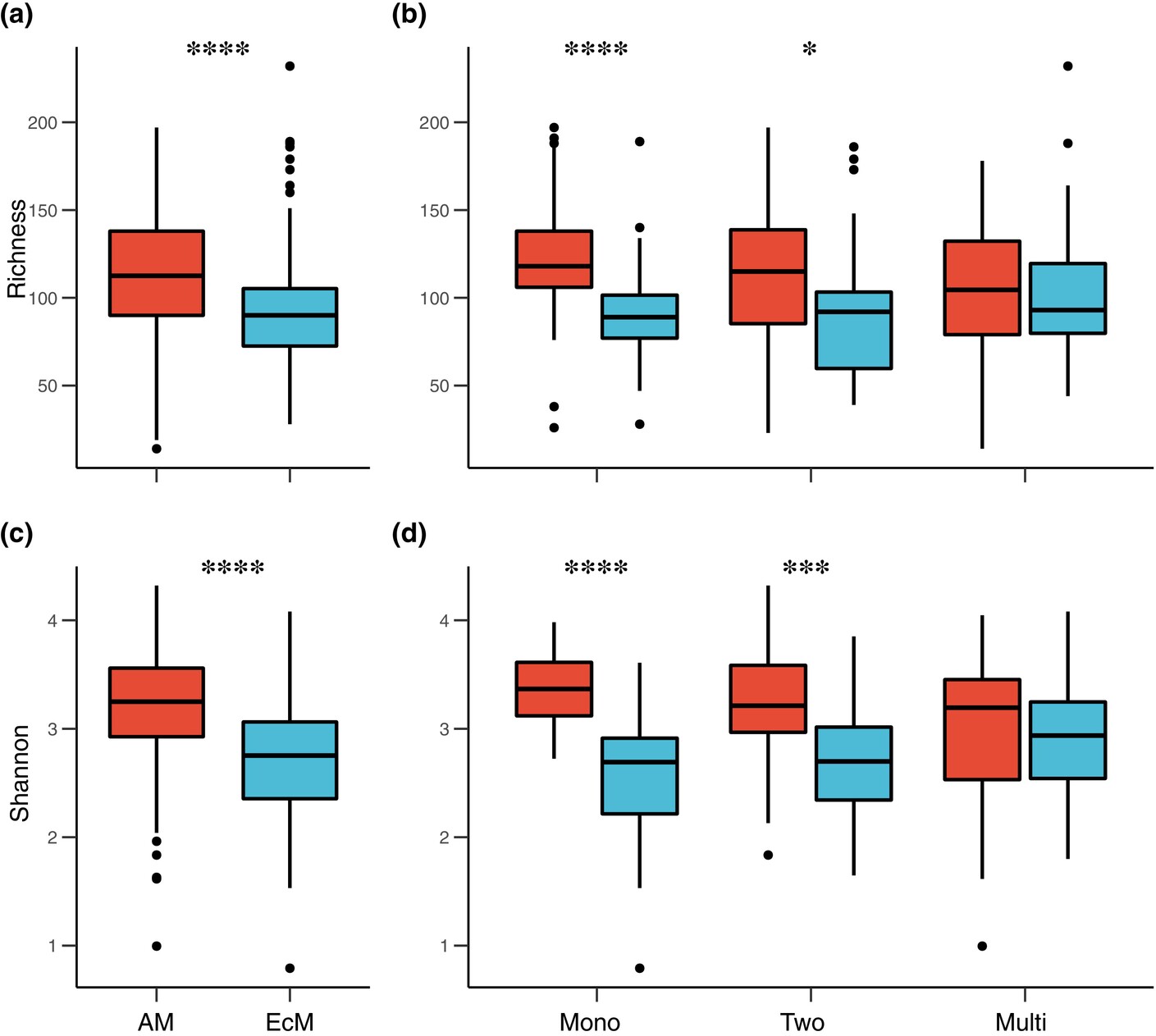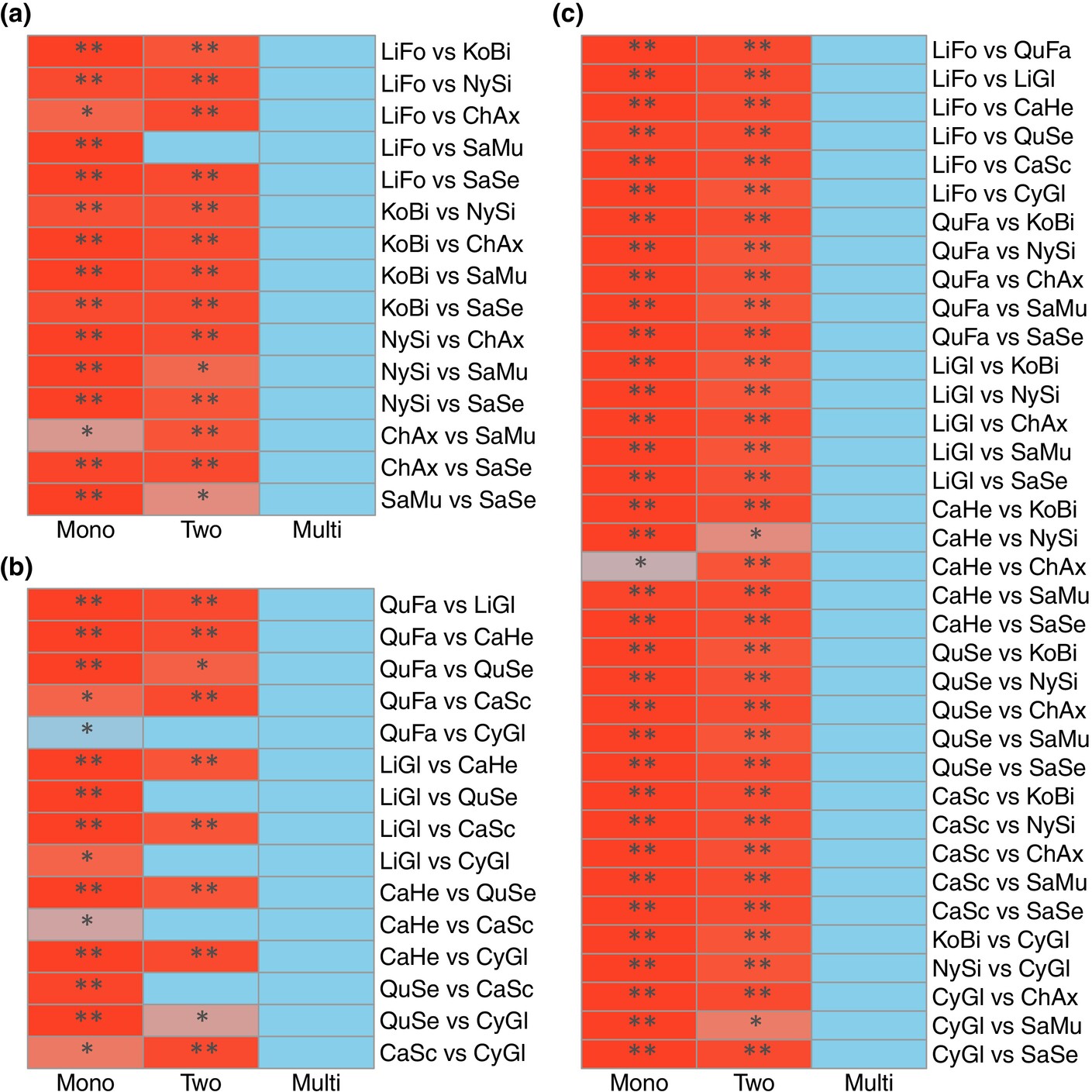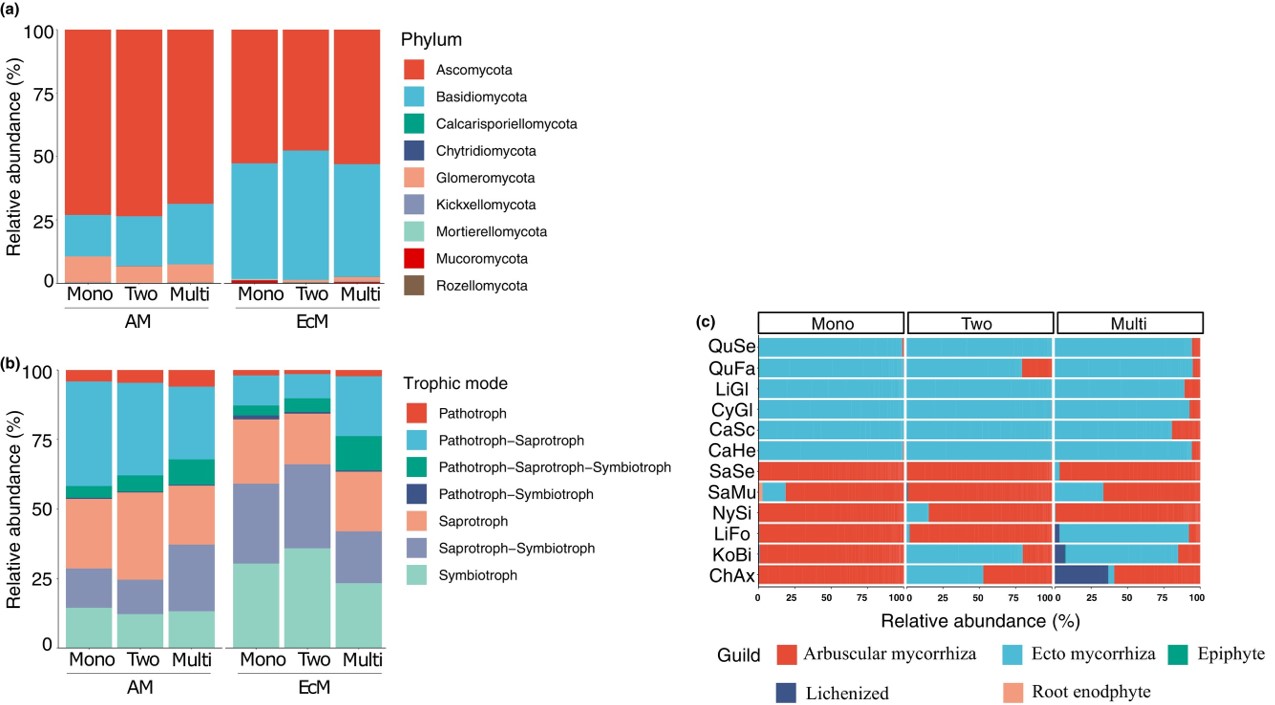Understanding the complex interactions between trees and fungi is crucial for forest ecosystem management, yet the influence of tree mycorrhizal types, species identity, and diversity on tree-tree interactions and their root-associated fungal communities remains poorly understood.
Our study addresses this gap by investigating root-associated fungal communities of different arbuscular mycorrhizal (AM) and ectomycorrhizal (EcM) tree species pairs (TSPs) in a subtropical tree diversity experiment, spanning monospecific, two-species, and multi-species mixtures, utilizing Illumina sequencing of the ITS2 region.
The study reveals that tree mycorrhizal type significantly impacts the alpha diversity of root-associated fungi in monospecific stands. Meanwhile, tree species identity’s influence is modulated by overall tree diversity. Tree-related variables and spatial distance emerged as major drivers of variations in fungal community composition. Notably, in multi-species mixtures, compositional differences between root fungal communities of AM and EcM trees diminish, indicating a convergence of fungal communities irrespective of mycorrhizal type. Interestingly, dual mycorrhizal fungal communities were observed in these multi-species mixtures.
This research underscores the pivotal role of mycorrhizal partnerships and the interplay of biotic and abiotic factors in shaping root fungal communities, particularly in varied tree diversity settings, and its implications for effective forest management and biodiversity conservation.

Figure 1 Alpha-diversity indices of root-associated fungal communities. (a, c) Comparison of fungal observed richness, and Shannon diversities, respectively between all arbuscular mycorrhizal (AM) and ectomycorrhizal (EcM) TSPs. (b, d) Within the tree diversity level, differences between AM and EcM TSPs for the respective fungal alpha-diversity measures.

Figure 2 Ordination plots of distance-based redundancy analysis (dbRDA) constrained by mycorrhizal type and tree diversity level using Bray–Curtis distance.

Figure 3 Heatmap based on pairwise permutational multivariate analysis of variance (PERMANOVA) to test effects of tree diversity on tree species root-associated fungal community composition. (a) Arbuscular mycorrhizal (AM) tree species pairs (TSPs), (b) Ectomycorrhizal (EcM) TSPs, and (c) AM-EcM TSPs.

Figure 4 Taxonomic and functional composition of root-associated fungal communities across tree diversity levels. (a) Phylum level taxonomic composition of arbuscular mycorrhizal (AM) and ectomycorrhizal (EcM) tree species, (b) trophic mode level functional composition of AM and EcM tree species, (c) functional guild level composition of symbiotrophs of all tree species.

Figure 5 Variance partitioning analysis depicting the contribution of soil, tree community variables, topography, and spatial parameters to the root-associated fungal community composition. (a) Overall, (b) arbuscular mycorrhizal (AM) tree species, and (c) ectomycorrhizal (EcM) tree species.
Literature:
Bala Singavarapu*, Hafeez Ul Haq, Friedrich Darnstaedt, Ali Nawaz, Remy Beugnon, Simone Cesarz, Nico Eisenhauer, Jianqing Du, Kai Xue, Yanfen Wang, Helge Bruelheide, Tesfaye Wubet*. 2024. Influence of tree mycorrhizal type, tree species identity, and diversity on forest root-associated mycobiomes. New Phytologist. 242(4): 1691-1703. http://doi.org/10.1111/nph.19722.

